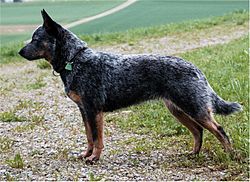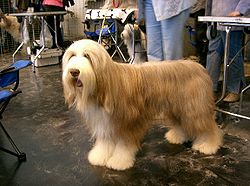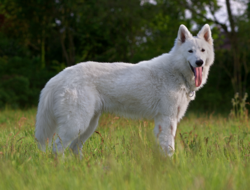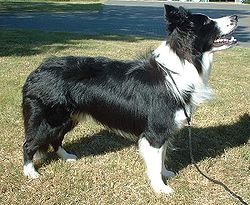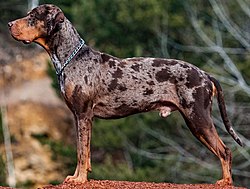


A sheep dog, sheepdog, shepherd dog or simply shepherd is generally a dog or breed of dogs historically used in connection with the raising of sheep. These include livestock guardian dogs used to guard sheep and other livestock and herding dogs used to move, manage and control sheep and other livestock.
Contents
The Fédération Cynologique Internationale has grouped Sheepdogs and Cattledogs (except Swiss Cattledogs) in Group 1. [1]
